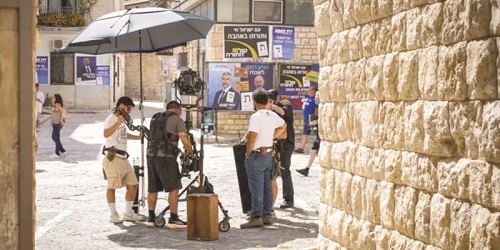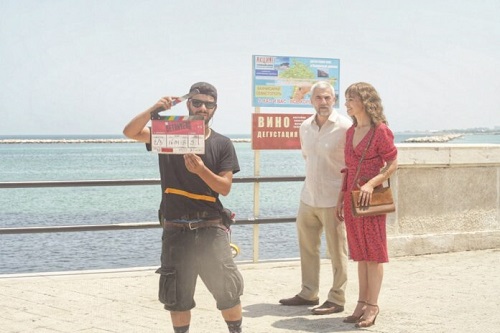Picturesque Apulia a Gem for Filmmakers
TORONTO – Canadian author and Giller Finalist David Bezmozgis just wrapped on his third feature film in Italy. The author/filmmaker best known for his 2014 novel “The Betrayers”, directed the film adaptation in Puglia over three weeks in June. Scenes were shot in Bari, Bitetto, Monopoli, Mola di Bari and Modugno – but doubled for foreign cities. The Betrayers is about “A disgraced Israeli politician who comes face to face with the man who denounced him to the KGB and sent him to the Gulag”.
With the contribution of the Apulia Film Fund, the Apulia Film Commission and Regione Puglia, the filmmakers were able to transform various neighbourhoods throughout Puglia’s diverse landscape into Crimea and Jerusalem. One of Puglia’s defining and distinctive features is that it was a historical crossroad of civilizations. From its rugged coastlines to diverse architectural styles, the region is an ideal location for several reasons – but most of all for its variegated landscape.
In an industry where filmmakers and their financiers often quarrel over budget constraints, achieving verisimilitude becomes the artist’s holy grail. This might explain why Puglia, with the exception of Lazio, is the busiest region for film production. International productions can more easily transform the Apulian landscape to fit their needs, given its sun-drenched atmosphere and white and yellow stone buildings.
The Apulia Film Commission reported in 2024 that over the last fifteen years, nearly 500 audiovisual productions have traveled to the region for their films. The economic impact they assert, was almost 100 million euro on the territory. The film commission’s annual funding pot is 10 million euro, requiring that each applicant schedule at least 25% of the shoot in Puglia. In the process, local film crews are hired and often in the hundreds with larger [American] productions. In the case of The Betrayers, 45 Italians were hired on set.
Were it not for Lazio having two film funds and the historic Cinecittà, Puglia would have the country’s most robust and aggressive film commission. The Roma-Lazio Film Commission is comprised of two funds. One is the Regional Fund for Cinema and Audiovisual, with an annual budget of 9 million euros. The second is the Lazio Cinema International Fund, which has an annual budget of 10 million euros, focused on international co-productions.
All that said, The Apulia Film Commission deserves recognition for having grown in size and influence within the international filmmaking scene. The region’s decision makers, at least in the realm of film and tourism, appear to have a firm handle on how to attract business. Strategic investment, key film incentives and an intuitive support system for filmmakers have made Apulia a jewel location for Producers worldwide.
(Images courtesy of Vortex Media)
Massimo Volpe is a filmmaker and freelance writer from Toronto: he writes reviews of Italian films/content on Netflix






